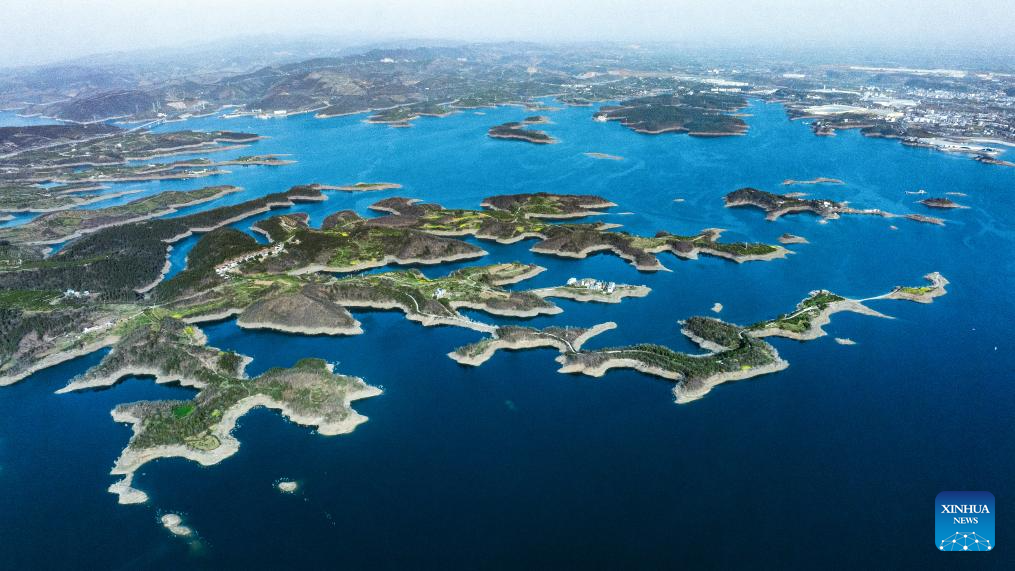
An aerial drone photo taken on March 21, 2024 shows the Danjiangkou reservoir in central China's Hubei Province.
China's South-to-North Water Diversion Project has three routes. The middle route, which is the most prominent one, begins at the Danjiangkou Reservoir in central China's Hubei Province and runs through Henan and Hebei before reaching Beijing and Tianjin.
The middle route of the project began supplying water on Dec. 12 of 2014. In the past nine years, the route has transferred over 60 billion cubic meters of water, and has benefited over 108 million people in central China's Henan Province, north China's Hebei Province, north China's Tianjin and the capital Beijing. (Xinhua/Xiao Yijiu)
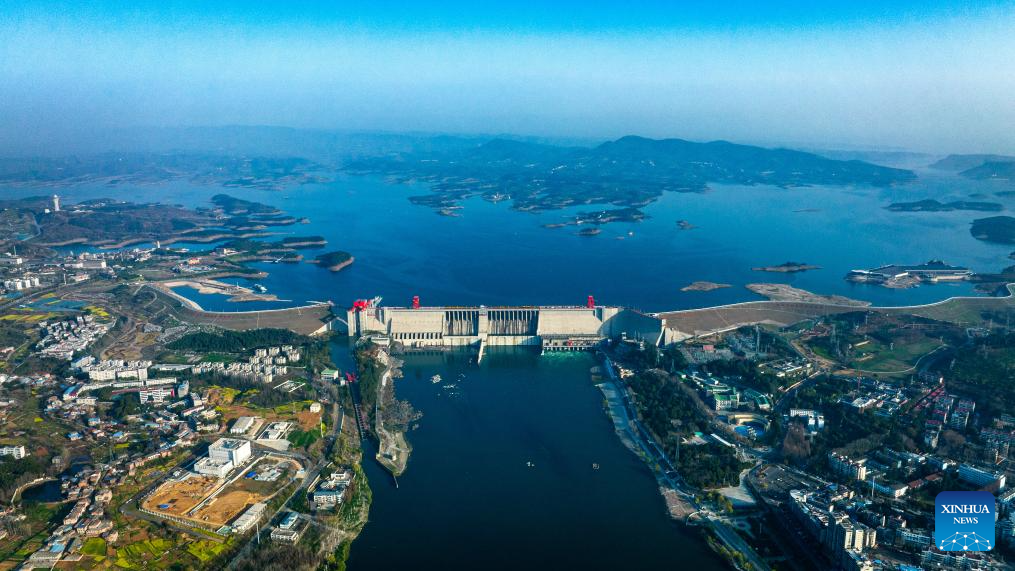
An aerial drone photo taken on March 22, 2024 shows the Danjiangkou reservoir in central China's Hubei Province.
China's South-to-North Water Diversion Project has three routes. The middle route, which is the most prominent one, begins at the Danjiangkou Reservoir in central China's Hubei Province and runs through Henan and Hebei before reaching Beijing and Tianjin.
The middle route of the project began supplying water on Dec. 12 of 2014. In the past nine years, the route has transferred over 60 billion cubic meters of water, and has benefited over 108 million people in central China's Henan Province, north China's Hebei Province, north China's Tianjin and the capital Beijing. (Xinhua/Xiao Yijiu)
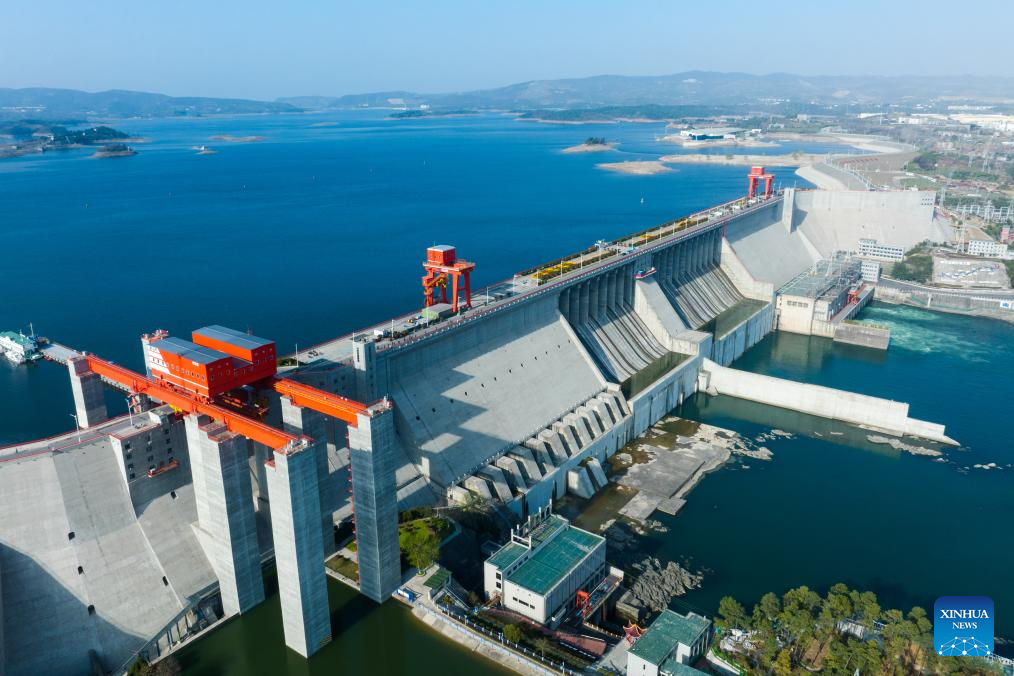
An aerial drone photo taken on March 21, 2024 shows the Danjiangkou reservoir in central China's Hubei Province.
China's South-to-North Water Diversion Project has three routes. The middle route, which is the most prominent one, begins at the Danjiangkou Reservoir in central China's Hubei Province and runs through Henan and Hebei before reaching Beijing and Tianjin.
The middle route of the project began supplying water on Dec. 12 of 2014. In the past nine years, the route has transferred over 60 billion cubic meters of water, and has benefited over 108 million people in central China's Henan Province, north China's Hebei Province, north China's Tianjin and the capital Beijing. (Xinhua/Xiao Yijiu)
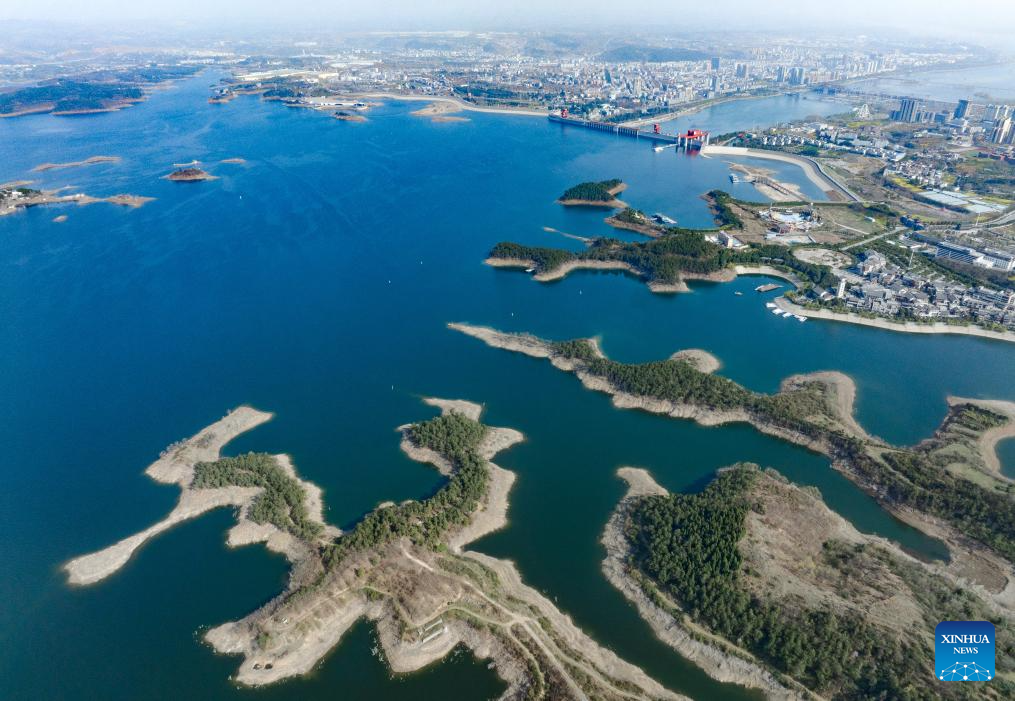
An aerial drone photo taken on March 21, 2024 shows the Danjiangkou reservoir in central China's Hubei Province.
China's South-to-North Water Diversion Project has three routes. The middle route, which is the most prominent one, begins at the Danjiangkou Reservoir in central China's Hubei Province and runs through Henan and Hebei before reaching Beijing and Tianjin.
The middle route of the project began supplying water on Dec. 12 of 2014. In the past nine years, the route has transferred over 60 billion cubic meters of water, and has benefited over 108 million people in central China's Henan Province, north China's Hebei Province, north China's Tianjin and the capital Beijing. (Xinhua/Xiao Yijiu)
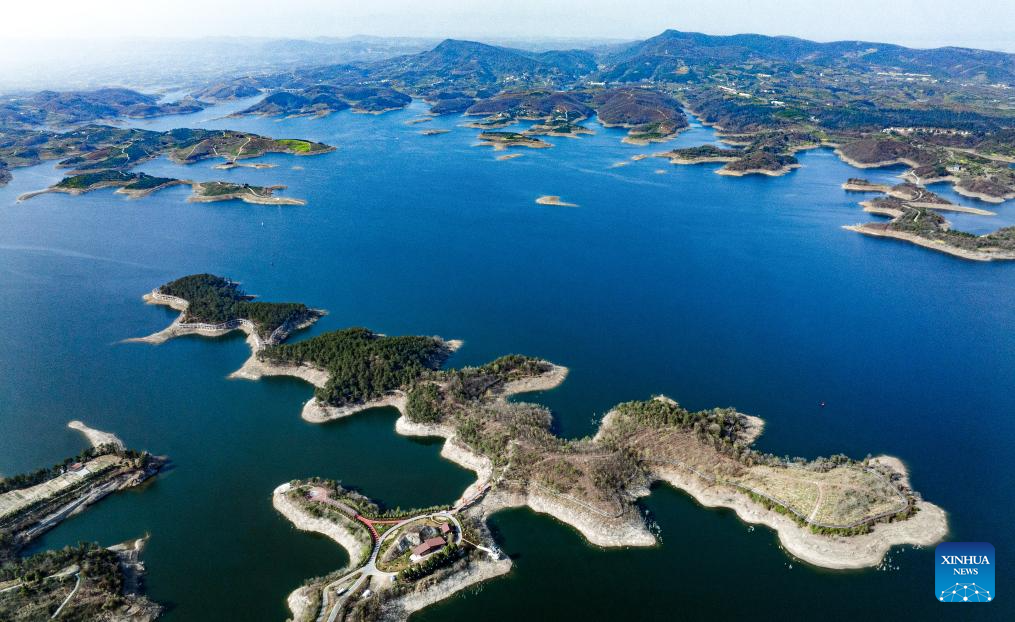
An aerial drone photo taken on March 21, 2024 shows the Danjiangkou reservoir in central China's Hubei Province.
China's South-to-North Water Diversion Project has three routes. The middle route, which is the most prominent one, begins at the Danjiangkou Reservoir in central China's Hubei Province and runs through Henan and Hebei before reaching Beijing and Tianjin.
The middle route of the project began supplying water on Dec. 12 of 2014. In the past nine years, the route has transferred over 60 billion cubic meters of water, and has benefited over 108 million people in central China's Henan Province, north China's Hebei Province, north China's Tianjin and the capital Beijing. (Xinhua/Xiao Yijiu)
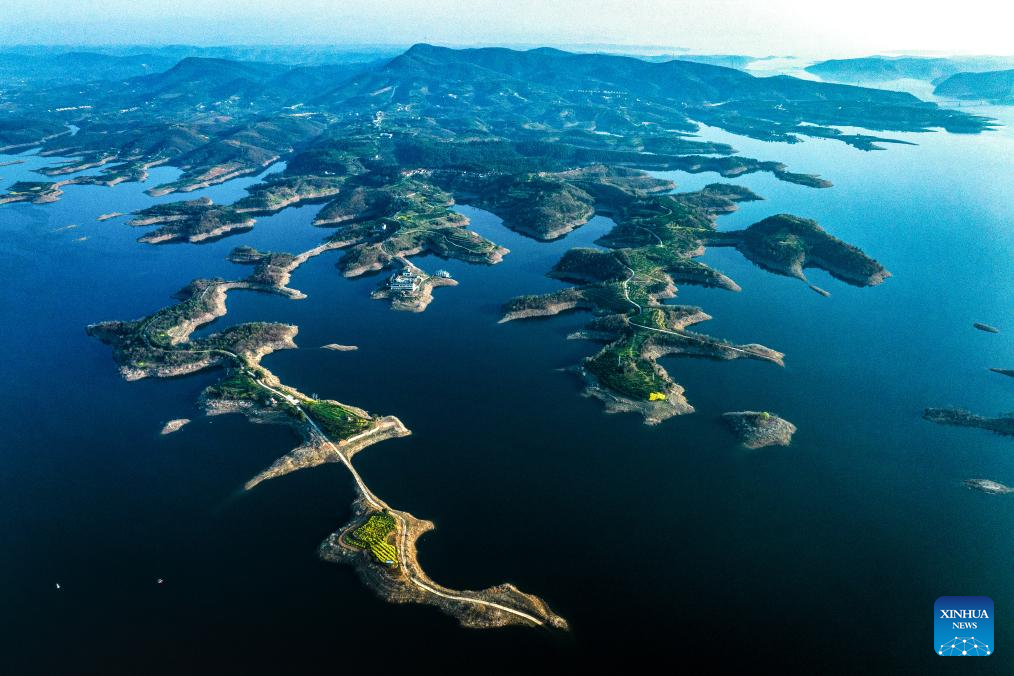
An aerial drone photo taken on March 22, 2024 shows the Danjiangkou reservoir in central China's Hubei Province.
China's South-to-North Water Diversion Project has three routes. The middle route, which is the most prominent one, begins at the Danjiangkou Reservoir in central China's Hubei Province and runs through Henan and Hebei before reaching Beijing and Tianjin.
The middle route of the project began supplying water on Dec. 12 of 2014. In the past nine years, the route has transferred over 60 billion cubic meters of water, and has benefited over 108 million people in central China's Henan Province, north China's Hebei Province, north China's Tianjin and the capital Beijing. (Xinhua/Xiao Yijiu)

An aerial drone photo taken on March 22, 2024 shows the Danjiangkou reservoir in central China's Hubei Province.
China's South-to-North Water Diversion Project has three routes. The middle route, which is the most prominent one, begins at the Danjiangkou Reservoir in central China's Hubei Province and runs through Henan and Hebei before reaching Beijing and Tianjin.
The middle route of the project began supplying water on Dec. 12 of 2014. In the past nine years, the route has transferred over 60 billion cubic meters of water, and has benefited over 108 million people in central China's Henan Province, north China's Hebei Province, north China's Tianjin and the capital Beijing. (Xinhua/Xiao Yijiu)
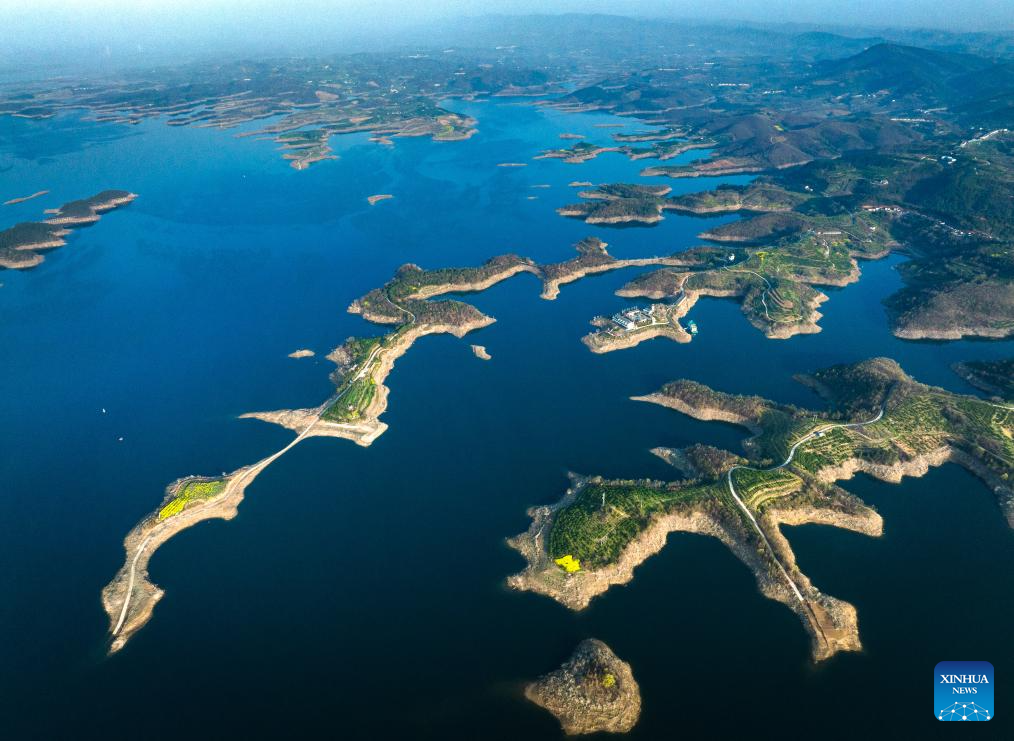
An aerial drone photo taken on March 22, 2024 shows the Danjiangkou reservoir in central China's Hubei Province.
China's South-to-North Water Diversion Project has three routes. The middle route, which is the most prominent one, begins at the Danjiangkou Reservoir in central China's Hubei Province and runs through Henan and Hebei before reaching Beijing and Tianjin.
The middle route of the project began supplying water on Dec. 12 of 2014. In the past nine years, the route has transferred over 60 billion cubic meters of water, and has benefited over 108 million people in central China's Henan Province, north China's Hebei Province, north China's Tianjin and the capital Beijing. (Xinhua/Xiao Yijiu)
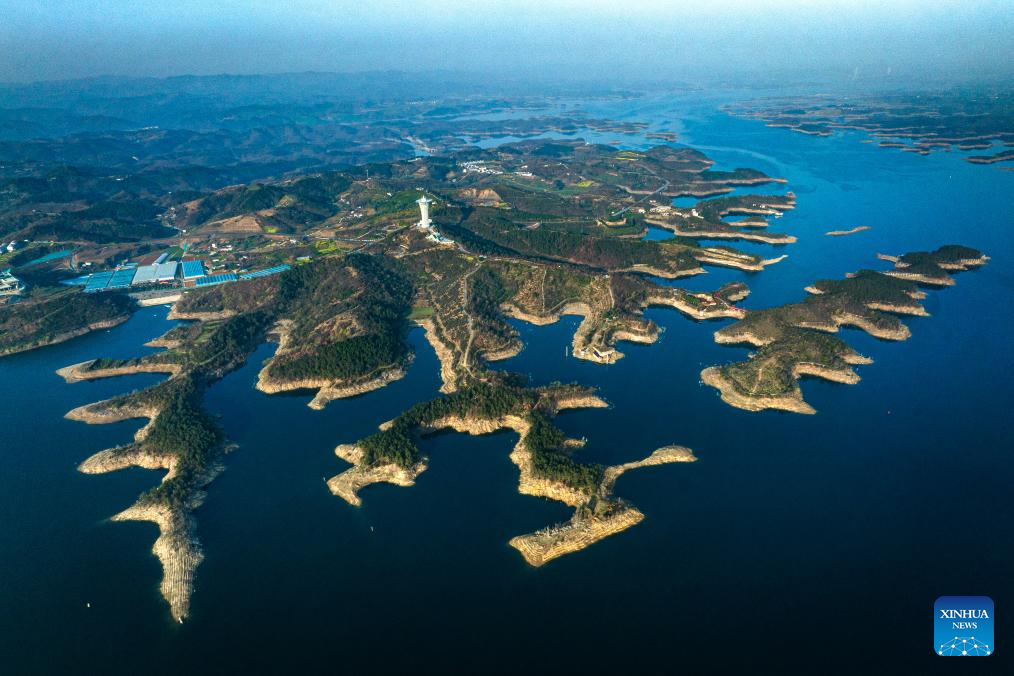
An aerial drone photo taken on March 22, 2024 shows the Danjiangkou reservoir in central China's Hubei Province.
China's South-to-North Water Diversion Project has three routes. The middle route, which is the most prominent one, begins at the Danjiangkou Reservoir in central China's Hubei Province and runs through Henan and Hebei before reaching Beijing and Tianjin.
The middle route of the project began supplying water on Dec. 12 of 2014. In the past nine years, the route has transferred over 60 billion cubic meters of water, and has benefited over 108 million people in central China's Henan Province, north China's Hebei Province, north China's Tianjin and the capital Beijing. (Xinhua/Xiao Yijiu)

An aerial drone photo taken on March 22, 2024 shows the Danjiangkou reservoir in central China's Hubei Province.
China's South-to-North Water Diversion Project has three routes. The middle route, which is the most prominent one, begins at the Danjiangkou Reservoir in central China's Hubei Province and runs through Henan and Hebei before reaching Beijing and Tianjin.
The middle route of the project began supplying water on Dec. 12 of 2014. In the past nine years, the route has transferred over 60 billion cubic meters of water, and has benefited over 108 million people in central China's Henan Province, north China's Hebei Province, north China's Tianjin and the capital Beijing. (Xinhua/Xiao Yijiu)
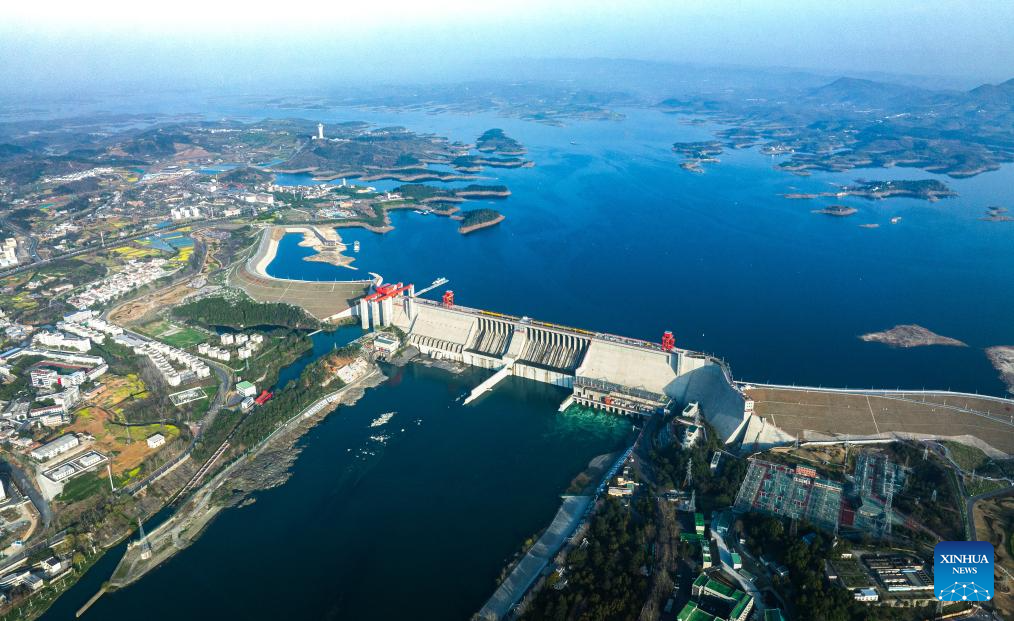
An aerial drone photo taken on March 22, 2024 shows the Danjiangkou reservoir in central China's Hubei Province.
China's South-to-North Water Diversion Project has three routes. The middle route, which is the most prominent one, begins at the Danjiangkou Reservoir in central China's Hubei Province and runs through Henan and Hebei before reaching Beijing and Tianjin.
The middle route of the project began supplying water on Dec. 12 of 2014. In the past nine years, the route has transferred over 60 billion cubic meters of water, and has benefited over 108 million people in central China's Henan Province, north China's Hebei Province, north China's Tianjin and the capital Beijing. (Xinhua/Xiao Yijiu)
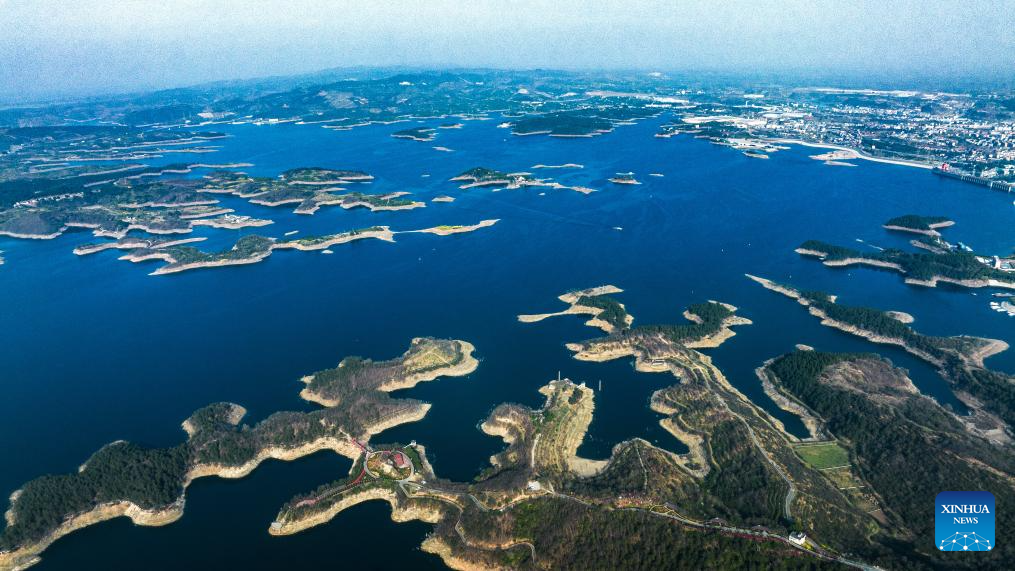
An aerial drone photo taken on March 21, 2024 shows the Danjiangkou reservoir in central China's Hubei Province.
China's South-to-North Water Diversion Project has three routes. The middle route, which is the most prominent one, begins at the Danjiangkou Reservoir in central China's Hubei Province and runs through Henan and Hebei before reaching Beijing and Tianjin.
The middle route of the project began supplying water on Dec. 12 of 2014. In the past nine years, the route has transferred over 60 billion cubic meters of water, and has benefited over 108 million people in central China's Henan Province, north China's Hebei Province, north China's Tianjin and the capital Beijing. (Xinhua/Xiao Yijiu)



